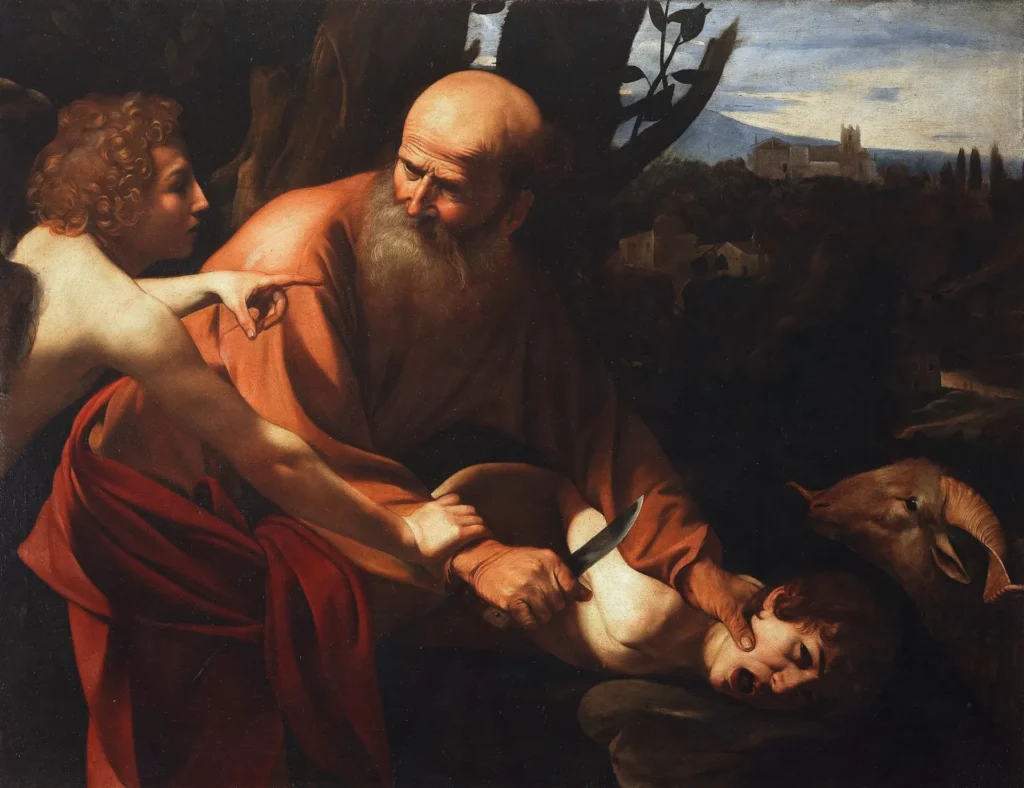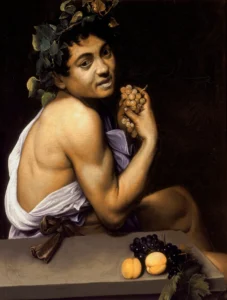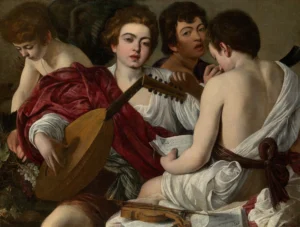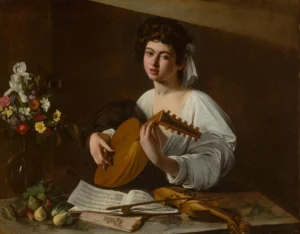Sacrifice of Isaac (1603)
The Sacrifice of Isaac encapsulates a pivotal moment from the biblical narrative, depicting the dramatic tension as Abraham is halted by an angel just before sacrificing his son Isaac. Caravaggio's use of chiaroscuro enhances the emotional weight of the scene, focusing on the stark contrasts between light and shadow. The landscape background adds a distinctive element, reflecting the artist's training in Lombardy and Veneto. The painting not only highlights the human condition and divine intervention but also foreshadows the ultimate sacrifice of Christ, making it a profound commentary on faith.
Year 1603
About the Artwork
This painting was commissioned by Cardinal Maffeo Barberini, which reflects the high esteem in which Caravaggio was held during his time. As Barberini later became Pope Urban VIII, the work gained immense historical importance. Caravaggio's choice to depict the landscape, contrasting with his typical indoor scenes, showcases his evolving style influenced by the surroundings of his training regions. Moreover, the intense emotional expressions captured, particularly Abraham's desperation and the angel's firm grip, establish a dramatic narrative that continues to engage viewers centuries later. Notably, the model for Isaac was Cecco Boneri, who also served as an initial inspiration for the angel, revealing the interconnectedness in Caravaggio's artistic approach.
Did You Know
Liked what you see? Add it to your collection.
Enjoyed reading? Share it.
... continued
Commission and Ownership
The painting was commissioned by Cardinal Maffeo Barberini, who later became Pope Urban VIII. It is documented that Barberini made a series of payments to Caravaggio between May 1603 and January 1604 for this work.
Artistic Style and Technique
The painting is characteristic of Caravaggio's signature chiaroscuro style, which emphasizes dramatic lighting and deep shadows. This technique enhances the emotional and psychological drama of the scene, focusing the viewer's attention on the central figures of Abraham, Isaac, and the angel.
Composition and Figures
The scene depicts the moment when Abraham, about to sacrifice his son Isaac, is stopped by an angel. The angel grasps Abraham's wrist firmly, pointing to a ram that is to be sacrificed instead of Isaac. The figures are rendered with great naturalism, particularly the old patriarch's wrinkled hands and the smooth skin of Isaac. Isaac is identified as Cecco Boneri, a model who appeared in several of Caravaggio's works. Interestingly, X-ray analysis revealed that Caravaggio initially used Cecco as the model for the angel as well, later modifying the profile and hair to hide the resemblance.
Background
Unlike most of Caravaggio's works, which are set in interiors illuminated by artificial light, this painting features a landscape in the background. The landscape shows a Mediterranean hilly scene with cottages and a village, reflecting stylistic influences from Lombardy and Veneto where Caravaggio trained.
Symbolism and Interpretation
The painting has been subject to symbolic interpretations. For example, the building on the hill in the background has been seen as a church with a baptistery, symbolizing the future birth of the Catholic Church, and the light over the landscape as the light of divine grace. The sacrifice of Isaac is also seen as foreshadowing the sacrifice of Christ.
Current Location
The Sacrifice of Isaac is housed in the Uffizi Gallery in Florence, Italy. It was donated to the Uffizi in July 1917 by John Fairfax Murray, who had purchased it from the property of the Roman Prince’s family of Colonna Sciarra.










